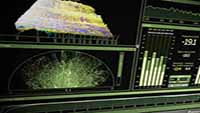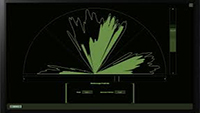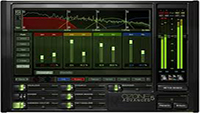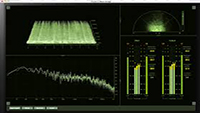 These entirely simple tips will allow you to achieve a lot larger width while mixing in comparison with common instrument panning in a project. However, before you get absorbed in mix width elaboration, you should clearly understand whether you need such manipulations exactly in your mix.
These entirely simple tips will allow you to achieve a lot larger width while mixing in comparison with common instrument panning in a project. However, before you get absorbed in mix width elaboration, you should clearly understand whether you need such manipulations exactly in your mix.
Rash widening of some elements can plainly damp all the rest so make sure that basic track parts such as vocal, synth hooks and others keep playing a crucial role in composition.
Here, we’ll take a look at ten instruments and techniques which will help you out with generating width from mono sources and even with enhancing available stereo sounds.
1. Stereo enhancers
These processors provided in the widest range use different tricks to enhance width of a signal. Some of them manipulate with a phase and a delay; others do it with pitch shifting of channels, mixing short reverberation and so on. Consequently, plugins from various producers slightly differ in sound. As far as possible, try out some different processors to understand which of them is much better suited exactly to your material.
Please check my music mixing mastering work examples.
 2. Auto panners
2. Auto panners
It isn’t always necessary to simply “expand” a sound in space. A wide stereo base will do well, but, if you need to add some dynamics to a mix, auto panner plugins will perfectly suit. They smoothly move a sound to the left and right along channels with frequency modulation defined by an engineer. Auto panners are an excellent solution when it is necessary to enliven monotonous percussion background or to add more movement to sounds with larger sustain.
3. Reverberation
Stereo reverberation is a technique used for widening a narrow signal and is familiar to every music mixing service. For this reason you should create AUX bus with a reverberator adjusted at a minimum length of the reverb tail – 100–200 ms. You may even cut reverberation high frequencies with an equalizer. Then blend little by little the sound from the bus to a clear signal. You may go a lot farther and play with levels of early and late reflections in reverberator settings. You’ll have quite an interesting effect at audio mixing and mastering services if you completely remove late reflections (in this case you won’t need to adjust the reverb tail as you won’t have it) and blend only early reflections.
 4. Double tracking
4. Double tracking
This method is the technique number one when you need to get a super wide sound of guitars in pop and rock mixes or fat vocal harmonies. You should just record exactly the same instrument part and pan hard tracks to the right and left. Width of a mix is guaranteed for you, a song will jump out of monitors, but the side effect of this technique is weak mono compatibility. This technique can also be used in other directions: try to pan two takes which absolutely differ from each other in timbre. Generally speaking, keep experimenting!
5. Modulation plugins
Such effects as a chorus, a flanger and a phaser create audible “thickening” of the original sound through the use of a short time delay and phase modulations. They are capable of changing a narrow sound considerably by expanding it in width and bringing a noticeable movement between right and left channels. But be careful, along with that they greatly change the timbre of instruments what, for instance, in most cases will hardly be suited to drums.
6. Delay and the Haas effect
Another common technique for widening at mixing mastering services is the use of the Haas effect to turn some mono instruments into stereo. The effect is based on a particularity of human hearing which, as far as known, doesn’t distinguish the delay shorter than 30 ms. Copy the track with the instrument and pan both copies to the left and right to the max. Apply a time delay up to 30 ms (in some cases up to 40–60 ms) to one of the tracks. Such a short delay is not perceived by human ear as echo, and, as a result, we hear one but quite a wide sound. If you create AUX bus with delay plugin with a zero delay on one of the channels and 1–30 ms on another and blend such processing with the original mono sound, you may achieve some interesting results as well.
If you need a pro engineer for your projects, I'll be happy to be at help - please learn my affordable professional music mixing services prices.
 5. Modulation plugins
5. Modulation plugins
Such effects as a chorus, a flanger and a phaser create audible “thickening” of the original sound through the use of a short time delay and phase modulations. They are capable of changing a narrow sound considerably by expanding it in width and bringing a noticeable movement between right and left channels. But be careful, along with that they greatly change the timbre of instruments what, for instance, in most cases will hardly be suited to mixing drums.
6. Delay and the Haas effect
Another common technique for widening a mix is the use of the Haas effect to turn some mono instruments into stereo. The effect is based on a particularity of human hearing which, as far as known, doesn’t distinguish the delay shorter than 30 ms. Copy the track with the instrument and pan both copies to the left and right to the max. Apply a time delay up to 30 ms (in some cases up to 40–60 ms) to one of the tracks. Such a short delay is not perceived by human ear as echo, and, as a result, we hear one but quite a wide sound. If you create AUX  bus with delay plugin with a zero delay on one of the channels and 1–30 ms on another and blend such processing with the original mono sound, you may achieve some interesting results as well. This technique is fairly often used in our orchestral mixing and mastering services.
bus with delay plugin with a zero delay on one of the channels and 1–30 ms on another and blend such processing with the original mono sound, you may achieve some interesting results as well. This technique is fairly often used in our orchestral mixing and mastering services.
7. Panning contrasting sounds
The most noticeable widening effect can be received by hard panning two different instruments, for instance, a guitar lick and an organ part which has the rhythmical line approximately at the same pitch. The main secret of a truly wide sound on mixing mastering audio is indeed different sounding of right and left channels.
8. Equalization differences in right and left channels
If the previous techniques seem too drastic for your case, there is a lot more subtle way to give width to a mix – L/R equalization. Like in the previous technique our purpose is to boost tonal contrast between sides at online mixing music. As most equalizers support L/R equalization mode, grab your DAW stock EQ on the track and decrease some frequencies in the right channel, but boost the same ones in the left channel.
9. Microshifting
It’s sufficient to create the difference in channels through slight pitch shifting one of them to receive splendid stereo sounding from dull mono. This effect is perfectly implemented in Waves Doubler and has a number of fairly useful settings. If you don’t have anything like that, just create two extra copies of a mono instrument, which you are willing to widen, and pan them to the left and right to the max leaving the original in the center. Now lower the pitch of the left channel slightly and, correspondingly, raise that of the right (it goes without saying,  only a few cent), the sound will literally fill the entire stereo space of song mixed.
only a few cent), the sound will literally fill the entire stereo space of song mixed.
10. Layering mono and stereo signal
If the original sound is not wide enough, and the dramatic interference in its settings contradicts your idea, layer it then with another sound which is less noticeable in a mix, but is a lot wider. Try to blend a fat punchy mono snare with chorused snare sample. Or lay a wide and fat pad on a thin and bright lead. There are a lot of possibilities; the main thing is to keep on experimenting!
For more detailed help with mixing your songs please learn my online pro mixing and music mastering prices.
